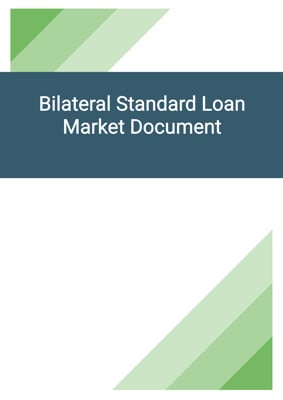How to Tailor the Document for Your Need?
01
Create Document
Fill in the details of the parties. You can click the "Fill with Member’s Information" button to complete it with information saved to your account.
02
Fill Information
Please fill in any additional information by following the step-by-step guide on the left hand side of the preview document and click the "Next" button.
03
Get Document
When you are done, click the "Get Document" button and you can download the document in Word or PDF format.
04
Review Document
The document should be signed by the authorised signatory (or directors of a company) and witnessed to complete the formality.
Document Preview
Document Description
The document titled 'Counter Indemnity to a Guarantor for a Loan' is a legal agreement entered into between two parties: the Guarantor and the Indemnifier. The document is of significant importance as it establishes the terms and conditions under which the Guarantor agrees to provide a guarantee to the Bank on behalf of the Indemnifier. The purpose of the guarantee is to secure a loan agreement between the Bank and the Borrower.
The document begins with an introduction, stating the parties involved and their registered offices. It then proceeds to provide a detailed interpretation of key terms and definitions used throughout the document. These definitions include terms such as 'Bank', 'Financing Documents', 'Guarantee', and 'Loan Agreement'. The interpretation section ensures clarity and understanding of the document's content.
The counter-indemnity itself is outlined in section 2. It states that the Indemnifier undertakes to pay the Guarantor the amount equal to any indemnified amount that the Guarantor pays or is obliged to pay to the Bank. The Indemnifier also agrees to fully indemnify the Guarantor and the Bank against any losses, claims, costs, charges, and expenses incurred under the guarantee or this counter-indemnity.
Section 3 establishes that the indemnity provided by this counter-indemnity is continuing and extends to the ultimate balance of the indemnified amounts. It ensures that the Indemnifier remains liable for the indemnified amounts, regardless of any intermediate payments or discharges.
Section 4 addresses the discharge and release of the Indemnifier. It states that the Indemnifier cannot terminate this counter-indemnity unless the indemnified amounts have been irrevocably paid in full. The Guarantor may, at the request and cost of the Indemnifier, discharge or release the Indemnifier by written instrument.
Section 5 contains a waiver of defences clause, stating that the liabilities and obligations of the Indemnifier under this counter-indemnity remain in force regardless of any act, omission, neglect, event, or matter. The Indemnifier's obligations are not impaired by any amendment, variation, release, or granting of time or indulgence by the Guarantor or the Bank.
Section 6 clarifies that demands under this counter-indemnity can be made at any time, irrespective of any demands, steps, or proceedings against the Borrower, the Guarantor, or any third party. The liabilities and obligations of the Indemnifier can be enforced regardless of the enforcement of any security held by the Guarantor or the Bank.
Section 7 includes representations and warranties made by the Indemnifier. These representations and warranties are similar to those made by the Borrower in the loan agreement, with appropriate amendments. The Indemnifier warrants that it has fully disclosed all material facts to the Guarantor and that the transactions contemplated in this counter-indemnity are of a purely commercial nature.
Section 8 contains undertakings by the Indemnifier, including maintaining ownership of the borrower's share capital, obtaining consent for any security interest, and refraining from claiming as a creditor in competition with the Guarantor.
Section 9 establishes that the Guarantor may place and keep any amounts received under this counter-indemnity to the credit of an account of the Indemnifier or another person, without liability to pay interest.
Section 10 states that a certificate issued by the Guarantor regarding the amount of indemnified amounts shall be conclusive evidence against the Indemnifier.
Section 11 incorporates miscellaneous provisions from the loan agreement, with appropriate replacements of references to the loan agreement, the borrower, and the bank. The notice details of the parties are also provided.
Section 12 addresses the invalidity of any provision in this counter-indemnity, stating that the validity, legality, and enforceability of the remaining provisions shall not be affected.
Section 13 clarifies that only the parties to this counter-indemnity have the right to enforce its terms.
Section 14 includes a choice of law and jurisdiction clause, stating that the indemnifier agrees to the jurisdiction of the courts mentioned in the clause and that any judgment or order in connection with this counter-indemnity is binding and enforceable in any jurisdiction.
In summary, this document is a comprehensive counter-indemnity agreement that outlines the rights, obligations, and responsibilities of the Guarantor and the Indemnifier. It ensures that the Guarantor is protected against any losses incurred due to the indemnified amounts, while also providing clarity and certainty for all parties involved.
How to use this document?
To effectively use the 'Counter Indemnity to a Guarantor for a Loan' document, follow these steps:
1. Familiarize yourself with the document: Read the entire document carefully to understand its purpose, terms, and obligations.
2. Identify the parties: Ensure that you correctly identify the Guarantor and the Indemnifier mentioned in the document. Verify their registered office addresses.
3. Understand the interpretation: Pay close attention to the definitions provided in section 1.1. These definitions will help you understand the terms used throughout the document.
4. Review the counter-indemnity terms: Focus on section 2, which outlines the indemnity provided by the Indemnifier to the Guarantor. Understand the obligations and liabilities of the Indemnifier in relation to the indemnified amounts.
5. Note the continuing indemnity: Take note of section 3, which states that the indemnity provided by this counter-indemnity is ongoing and extends to the ultimate balance of the indemnified amounts.
6. Consider discharge and release: Understand the conditions under which the Guarantor may discharge or release the Indemnifier, as outlined in section 4.
7. Be aware of waiver of defences: Section 5 states that the Indemnifier's obligations are not affected by any defences or actions that would have discharged the Indemnifier or impaired its liability.
8. Understand demands and enforcement: Section 6 clarifies that demands can be made under this counter-indemnity regardless of any ongoing proceedings. The Guarantor can enforce the Indemnifier's liabilities and obligations.
9. Review representations and warranties: Pay attention to section 7, which includes representations and warranties made by the Indemnifier. Ensure that the Indemnifier has disclosed all material facts and that the transactions are of a purely commercial nature.
10. Consider undertakings: Section 8 outlines the undertakings of the Indemnifier, including maintaining ownership of the borrower's share capital and obtaining consent for any security interest.
11. Note the suspense account provision: Understand that the Guarantor may place and keep any amounts received under this counter-indemnity to the credit of an account of the Indemnifier or another person.
12. Be aware of the certificate provision: Section 10 states that a certificate issued by the Guarantor regarding the amount of indemnified amounts is conclusive evidence.
13. Understand miscellaneous provisions: Review section 11, which incorporates miscellaneous provisions from the loan agreement. Pay attention to the notice details of the parties.
14. Consider choice of law and jurisdiction: Understand that the document is governed by the chosen law and jurisdiction mentioned in section 14.
By following these steps, you can effectively understand and utilize the 'Counter Indemnity to a Guarantor for a Loan' document in practice.
Not the right document?
Don’t worry, we have thousands of documents for you to choose from:




















